If you wish to construct your individual, I’ve a set of DIY rising shelf plans and a components checklist, together with every part I used:
First, I began off by constructing the principle physique of the rising shelf. It consists of a bit of plywood with a 2×4 hooked up to the bottom of it. On this 2×4, I hooked up some hooks. Then, within the 4 corners, I hooked up some storage door rollers. These rollers are actually versatile and had been key in making this venture work. 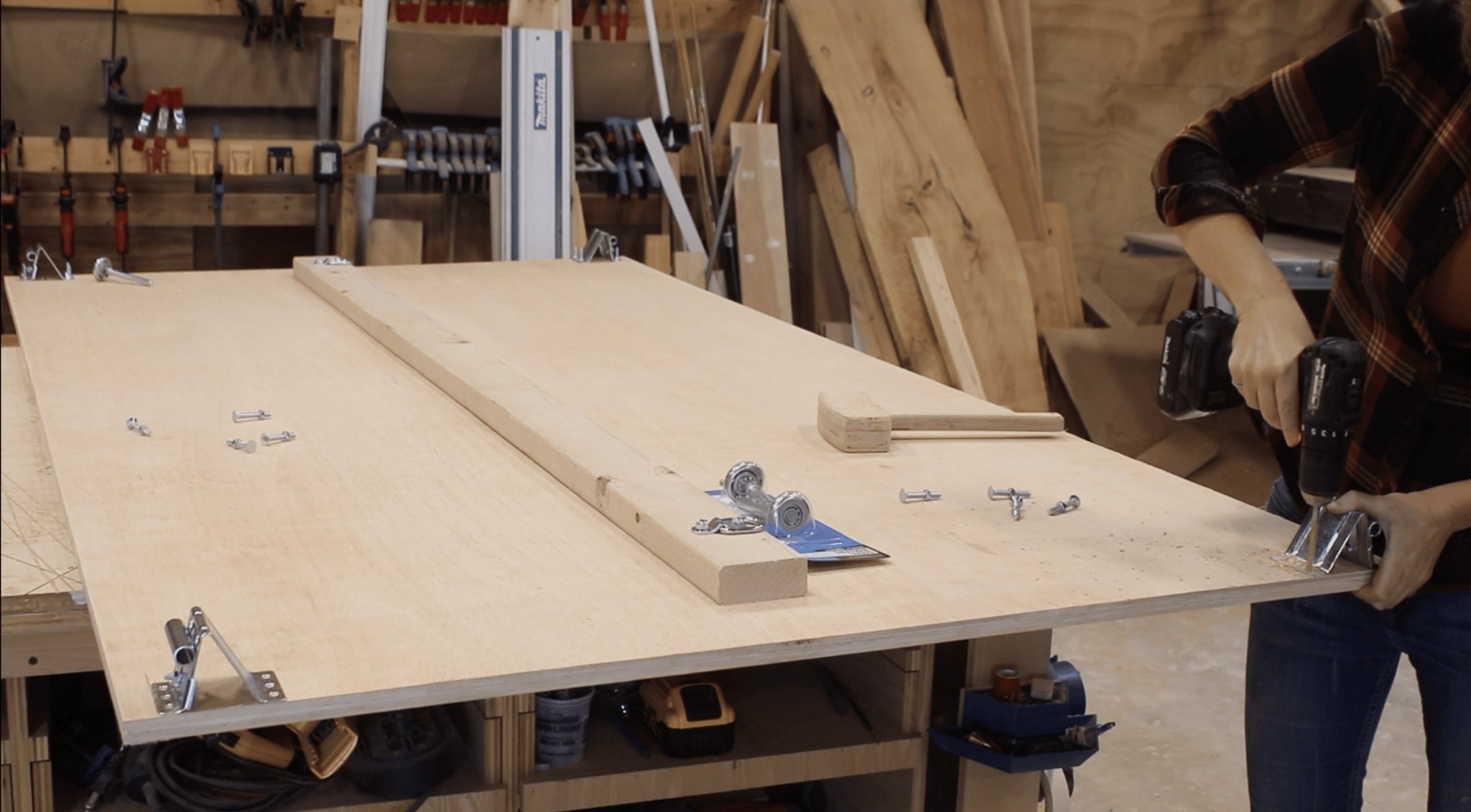
For a observe, I truly wished to purchase one thing off the shelf and ended up taking a look at storage door tracks. They use to be low-cost, however like every part else, have skyrocketed in value. As a substitute, I made a decision to construct my very own tracks from wooden. I grabbed the toughest wooden I had in my store that was lengthy sufficient, which was oak, and organized it into an L. For the tracks, you positively need one thing onerous for long-term sturdiness. I hooked up it to the wall by holding it in place and throwing in a single brad nail. This can maintain it simply lengthy sufficient for me to place a degree on it and plumb it up. I solely had a 4’ degree in my store so I moved to the underside, then prime, and positioned a number of brads as I straighten it out. As soon as it appeared good, I got here again with screws. I pre-drilled the holes to make sure the oak didn’t cut up. Subsequent, I repeated the method by attaching the precise observe the identical method because the left.
Now that the tracks are hooked up, I moved to the highest and hooked up some pulleys. These will likely be what the cable will go as much as, earlier than veering proper to the hoist. I used some lags to enter my wall right here. Then, although it isn’t wanted, I added a ledger board…simply to be secure. Quite a lot of the power on these pulleys will likely be vertical because it’s going to be reaching down and pulling the rising shelf upward. To immediately oppose this power, I ran screws up into the ledger board. That is along with the lags that went into the wall.
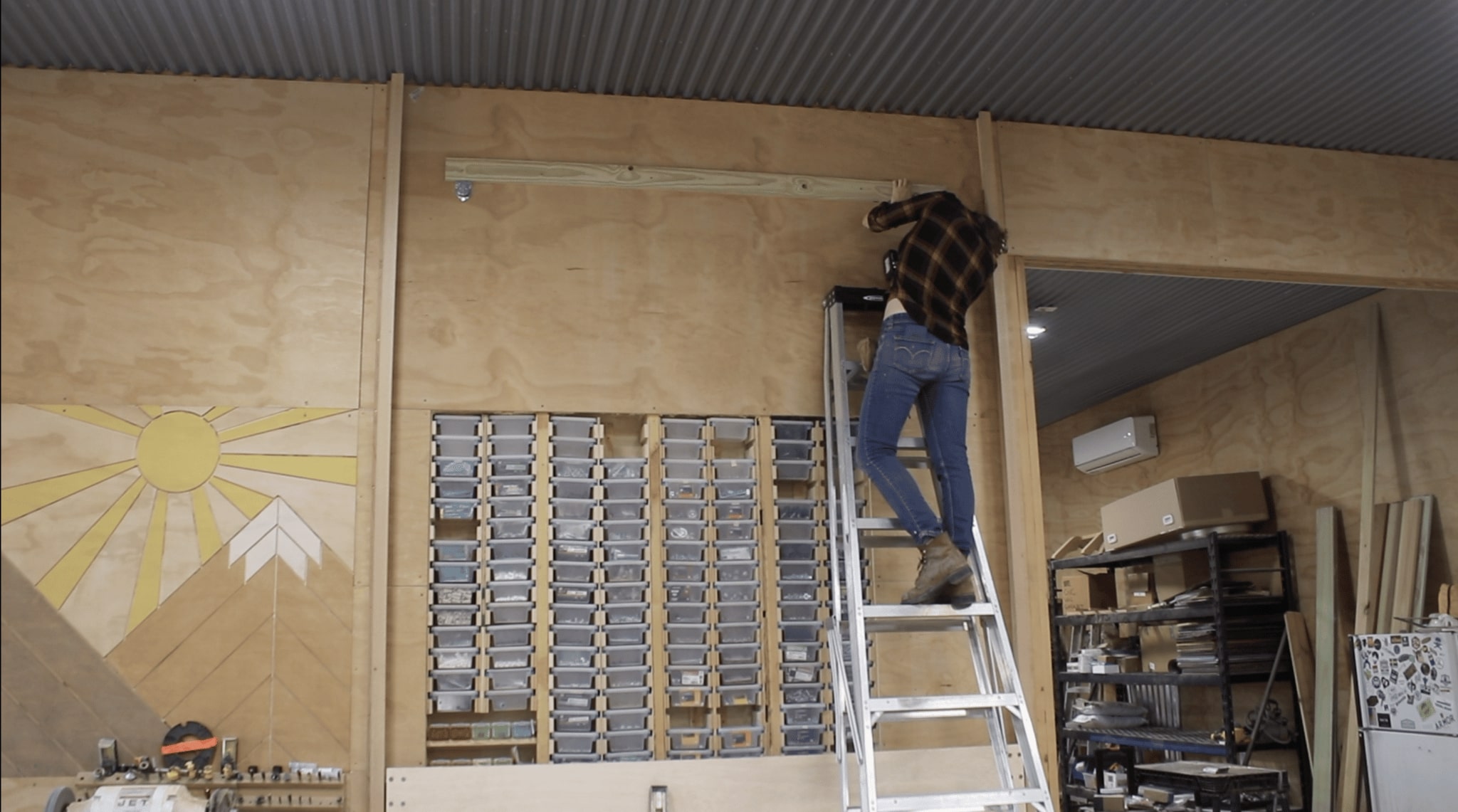
Transferring on, the subsequent step is to return to the shelf and connect a number of elements. The primary is a thimble hooked onto the anchor level on the two×4. That is used so the wire rope has a observe it may be positioned in after which it may be looped again onto itself. To safe it, I used what’s referred to as “wired rope clamps”, that are tighten down onto each the lead in and lead out strains. I used DAP’s Tank Bond Thread Locker on all the venture’s {hardware} that had a nut on it. I utilized it to the threads earlier than I added the nuts. It a fast-dry coating that creates a good seal that absorbs shock and vibrations, stopping fasteners from unintentionally backing out. I actually adore it as a result of the handled fasteners stay utterly adjustable, detachable and reusable if I’ve to exchange them sooner or later. I apply it to something that has vibration.
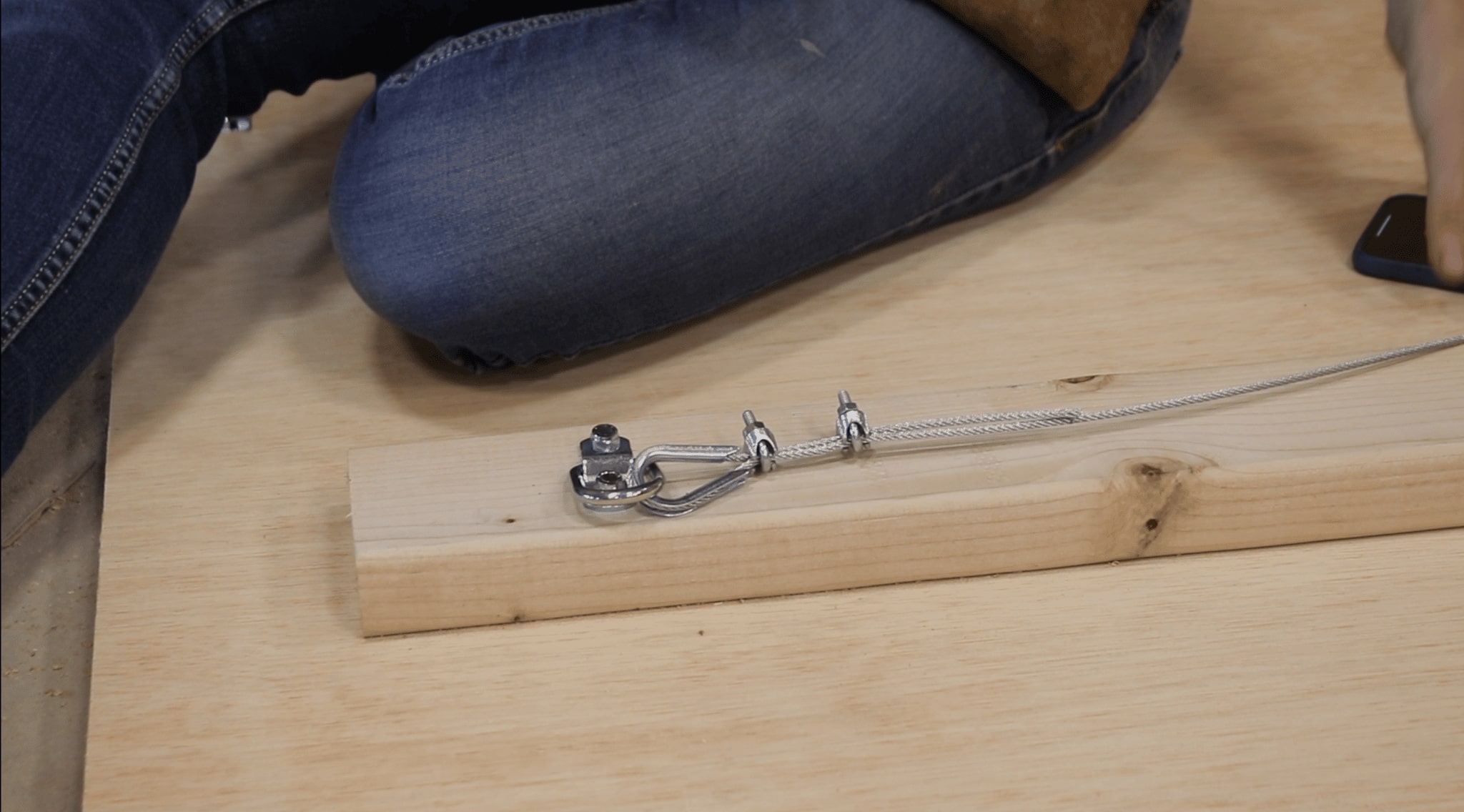
At this level I used to be capable of set the shelf in place. It’s giant and awkward so assist was wanted for this step. Jacob and I introduced it in from the underside, barely tilting it so the highest curler would slip into the observe, then straightening it out vertical.
I fed the cable as much as the pulleys from each anchors, however now wanted to affix them into one. What I did right here capabilities the identical precise method {that a} window blind does. Within the shelf set-up, the part I used is known as a turnbuckle. This allowed me to connect each cables to 1 aspect, then shoot one cable from the opposite. Additionally, this gave me the flexibility to make small, micro-adjustments afterward as soon as every part was put in and it was time to do closing tuning.
The final part so as to add is the hoist itself. The mounting bracket is an easy DIY one produced from some sq. tubing I had laying round. The holes are drilled in areas to match the stud location of the wall will probably be mounted onto. The hoist is form of heavy, however nothing unmanageable. I screwed a brief 2×4 to the wall to offer myself a resting shelf to set the hoist onto as I put lags into the studs.
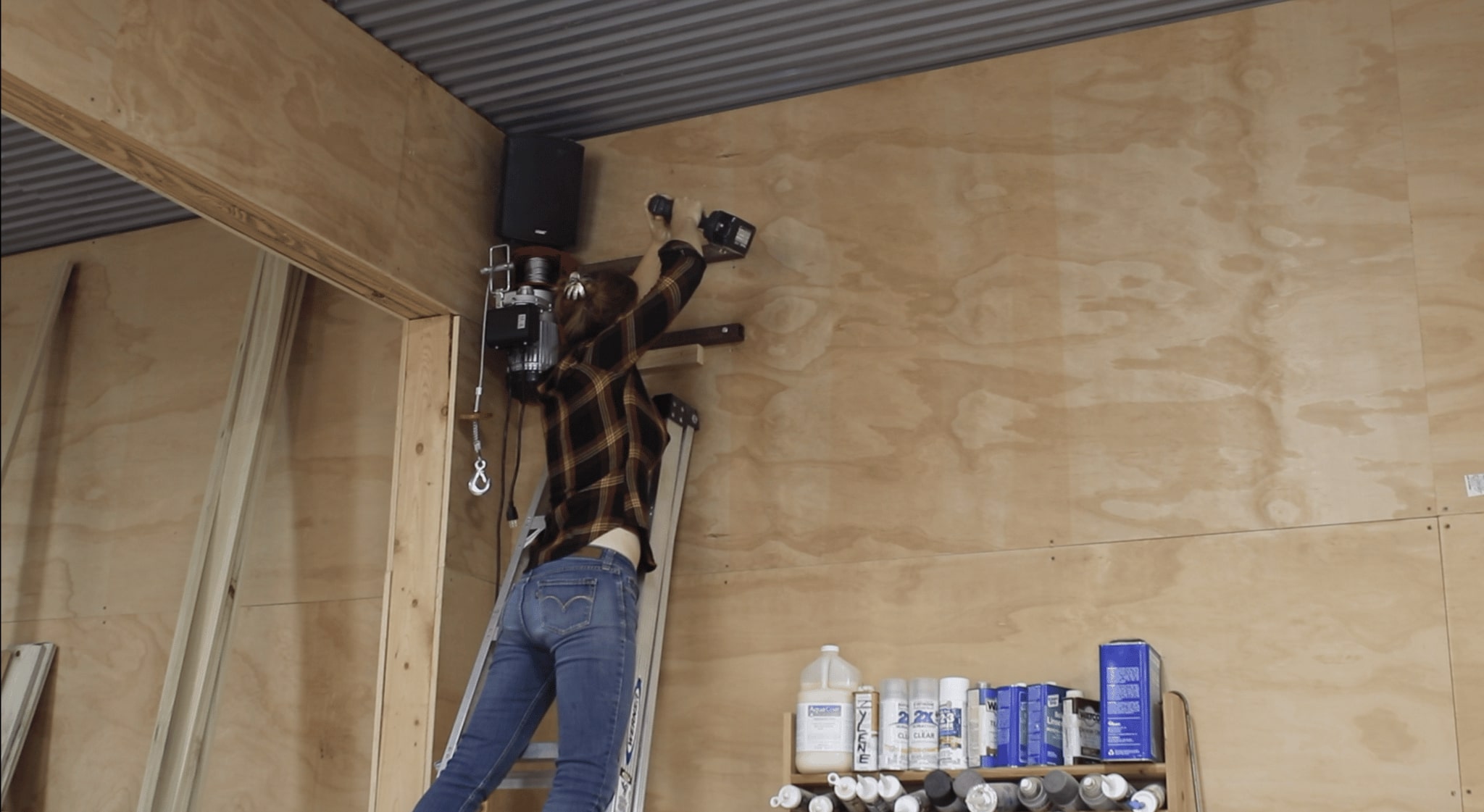
The final step, I added the shelving wanted to carry all the merchandise I wished to retailer right here. One of many coolest issues about this venture (I imply, apart from the truth that it’s a rising shelf), is you can customise it to carry absolutely anything. Simply carry on eye on the whole weight of the objects that you simply’re storing – it can should be under the capability of the hoist and the elements you used. The important thing issues to concentrate embody what the hoist is rated at and do all the elements have the identical ranking. One weak hyperlink in a series will trigger it to fail. I constructed the rising shelf as an final store storage system to prepare spray paint cans, tubes of caulk, paint cans, and paint provides equivalent to brushes.
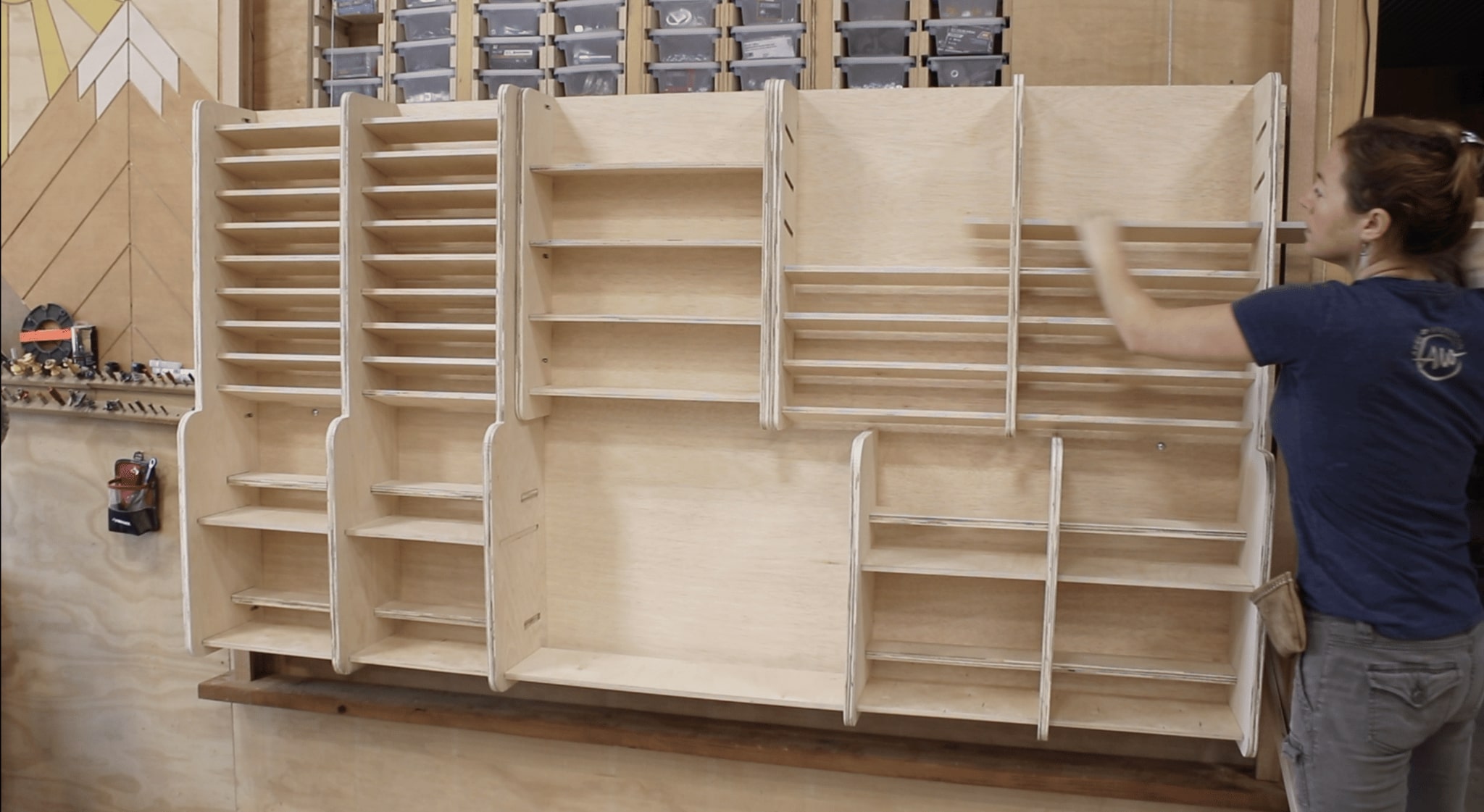
Earlier than I neglect, one other factor I did was lengthen the pendent to be over close to my shelf as an alternative of up by my hoist. Now, if my shelf is raised once I have to entry to my {hardware}, I can stroll proper as much as the wall and decrease it down. Then I can both hold it right here or I can elevate it again as much as retailer on the prime of my wall and hold the {hardware} rack uncovered. Cooooool!
Are you prepared for the earlier than and after?! Test it out!
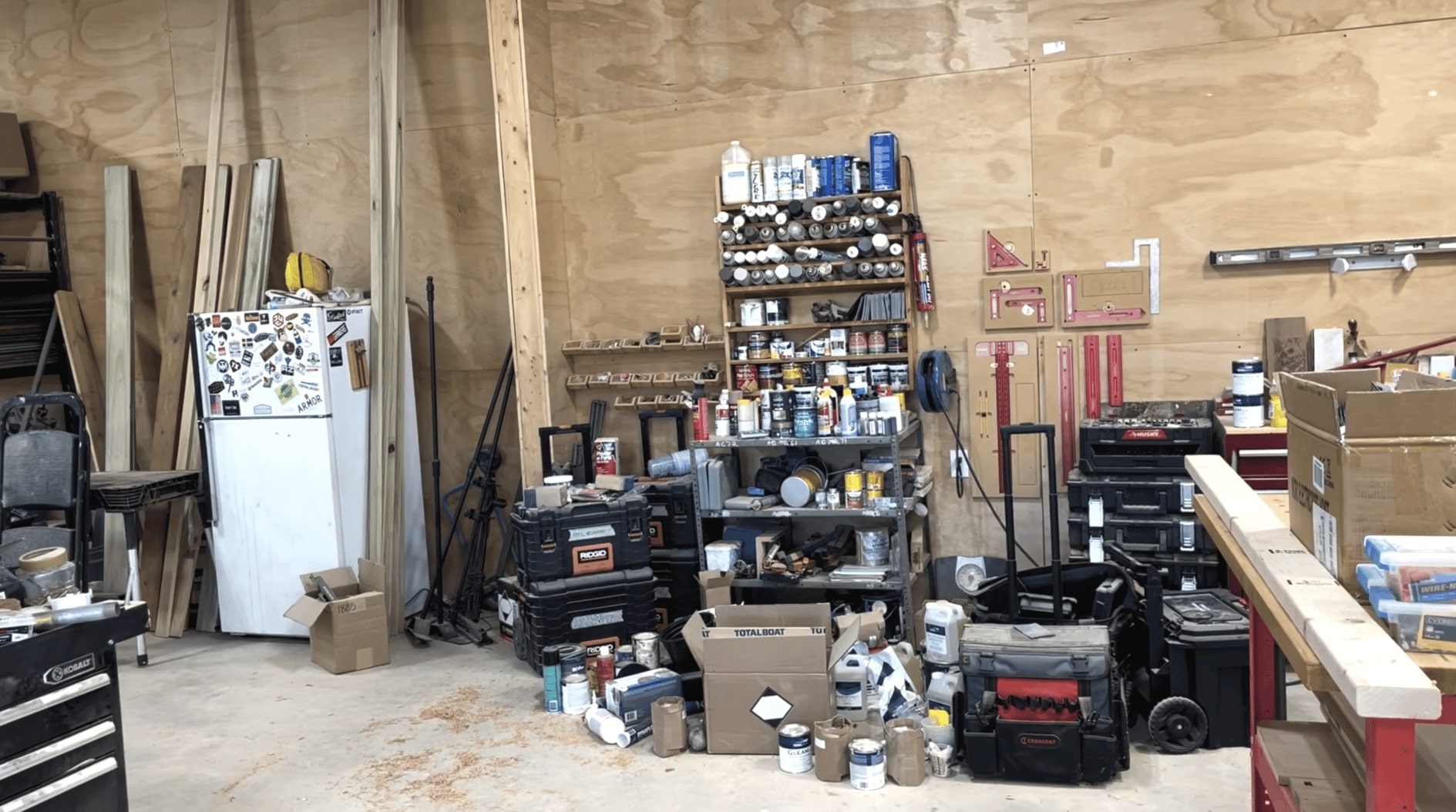
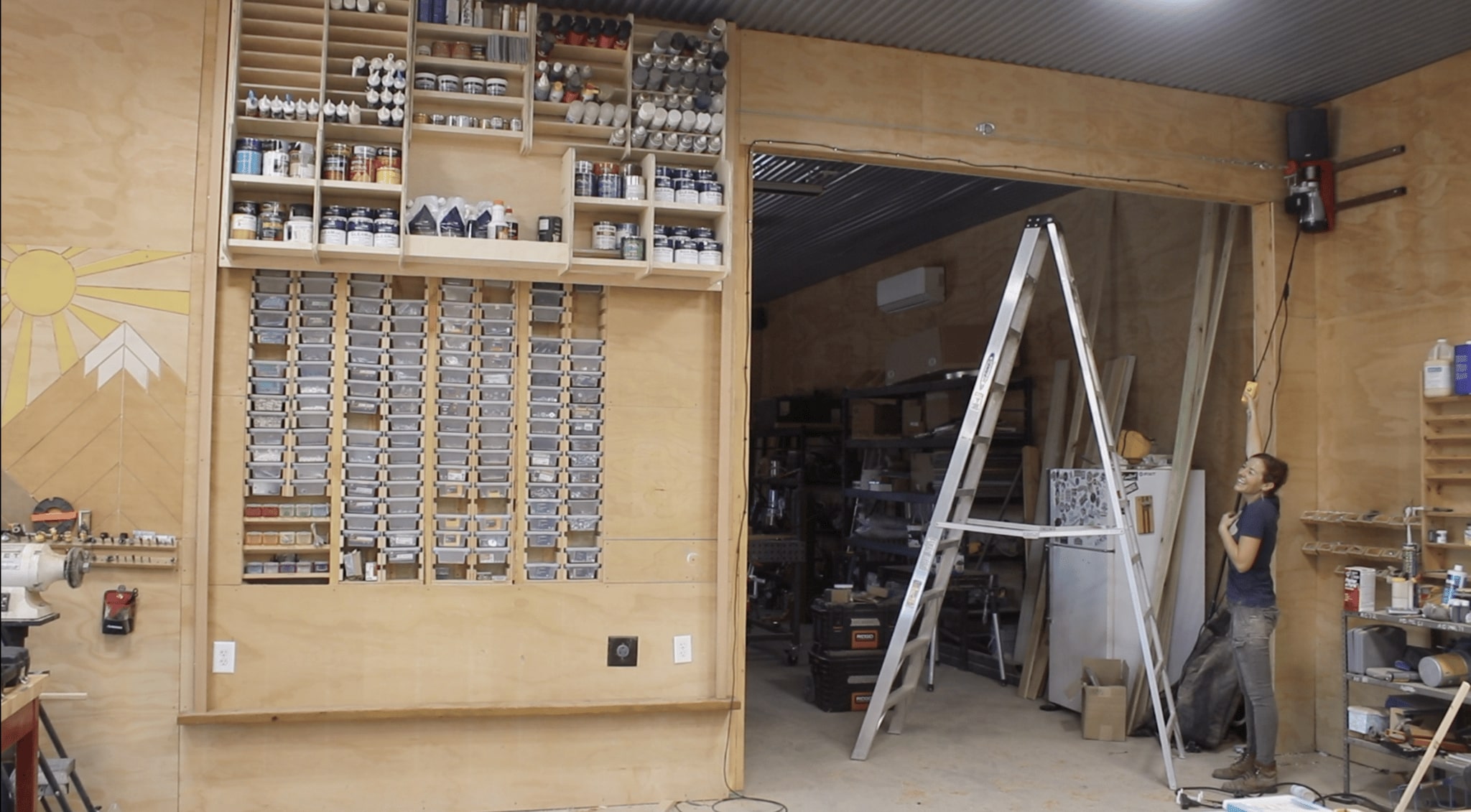
By the best way, I’ve a weblog and video on how I made this in-wall {hardware} rack if you wish to do the identical.
Don’t neglect to take a look at the DIY Rising Shelf Plans!
Focused on organizing your store? If that’s the case, I’ve a number of DIY workshop plans that will help you out! See y’all subsequent time!


